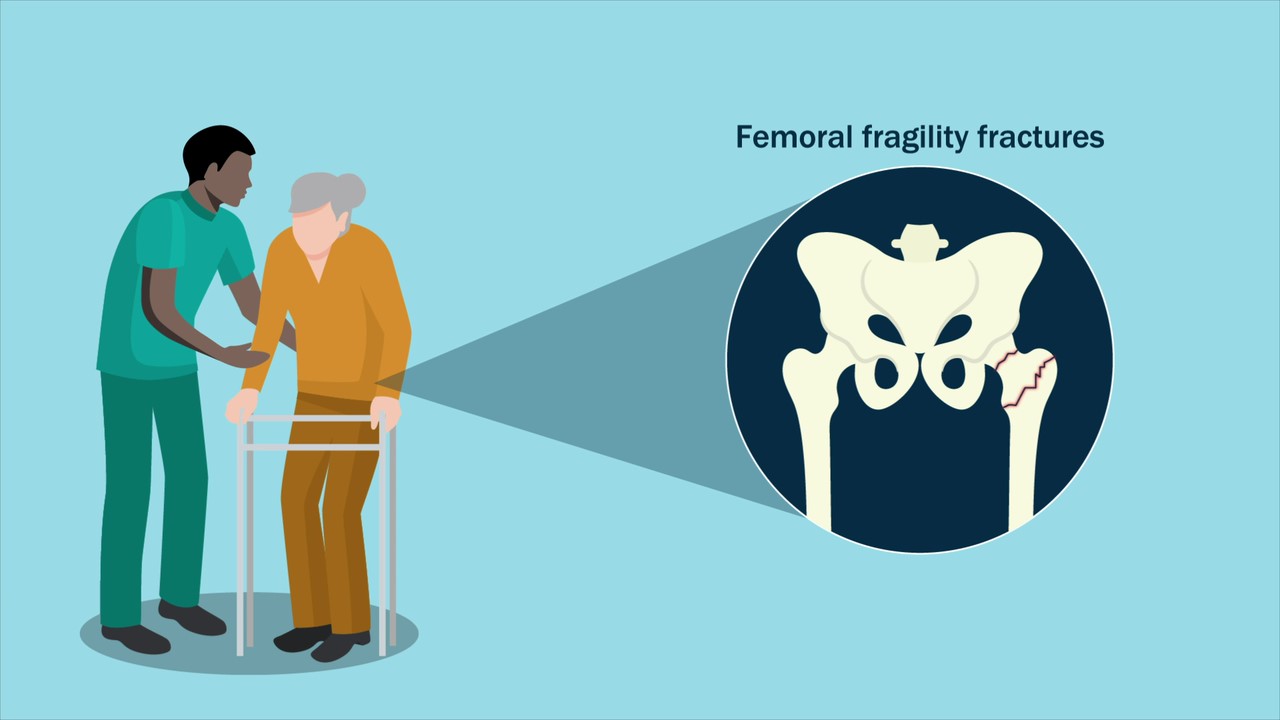JBJS Editor-in-Chief Dr. Marc Swiontkowski reflects on a new study examining changes in skeletal muscle mass following femoral fragility fracture.
Since the early 20th century, our focus has largely been on internal devices to optimize outcomes in hip fracture. Triflanged nails, fixed angle nails, sliding hip screws, short and long intramedullary nails, arthroplasty—we have sought and improved upon designs to address different fracture types.
While considerable emphasis over the past 100-plus years has been on bone in hip fracture, what about muscle and the impact of fractures on muscle mass and function?
In the November 15, 2023 issue of JBJS, Willey et al. evaluate the impact of femoral fragility fracture on muscle mass in patients ≥65 years of age. Participants were treated operatively for a low-energy femoral fragility fracture (hip to distal femoral fracture). The researchers assessed changes in skeletal muscle mass over time and explored the relationships between the loss of skeletal muscle mass, malnutrition, and physical function. Risk factors for the loss of skeletal muscle mass were identified.
Substantial Loss of Skeletal Muscle Mass Occurs After Femoral Fragility Fracture
A total of 90 participants (74% female; mean age, 77.6 years) were enrolled. Body composition was evaluated using multifrequency bioelectrical impedance analysis (BIA). As the authors describe, “BIA measures resistance (impedance) of the trunk, arms, and legs to a weak electrical current using 6 different frequencies, and produces measurements of skeletal muscle mass, lean body mass, and fat mass… Measurements were made within 72 hours of hospital admission, and at 6 weeks, 3 months, and 6 months after injury.”
Sarcopenia was assessed using sex-specific cutoffs for the appendicular skeletal muscle mass index (the ratio of appendicular skeletal muscle mass to height). Nutritional status was evaluated using the Mini Nutritional Assessment tool. Physical function was assessed using the PROMIS Physical Function domain.
Study Highlights
From the time of injury to 6 weeks post-fracture, participants lost an average of 2.4 kg, or 9%, of skeletal muscle mass. The researchers found that this early loss did not recover by 6 months.
Interestingly, those with normal nutritional status lost more skeletal muscle mass from baseline to 6 weeks post-fracture compared with those with malnutrition or at risk for malnutrition. In addition, the investigators found that a 1-kg decrease in skeletal muscle mass was associated with an 8-point decrease in the PROMIS Physical Function score. The loss of muscle mass was greater for participants who did not need an assistive device for ambulation prior to sustaining a fracture.
Continued Investigation
In all likelihood, we have maximized the impact of designing new internal fixation devices for hip fracture. It is now time to focus on nutritional and rehabilitation interventions to limit muscle loss with attendant functional impact and increased fall risk. The technique used to measure skeletal muscle mass in this manuscript will no doubt be a viable tool to continue to investigate such interventions.
A video abstract is available with the full study at JBJS.org: Substantial Loss of Skeletal Muscle Mass Occurs After Femoral Fragility Fracture
JBJS Editor-in-Chief
Drs. Antonia Chen and Andrew Schoenfeld discuss this study and others in the most recent episode of Your Case Is On Hold. Access the podcast here: Loss of Skeletal Muscle Mass after Femoral Fragility Fracture




